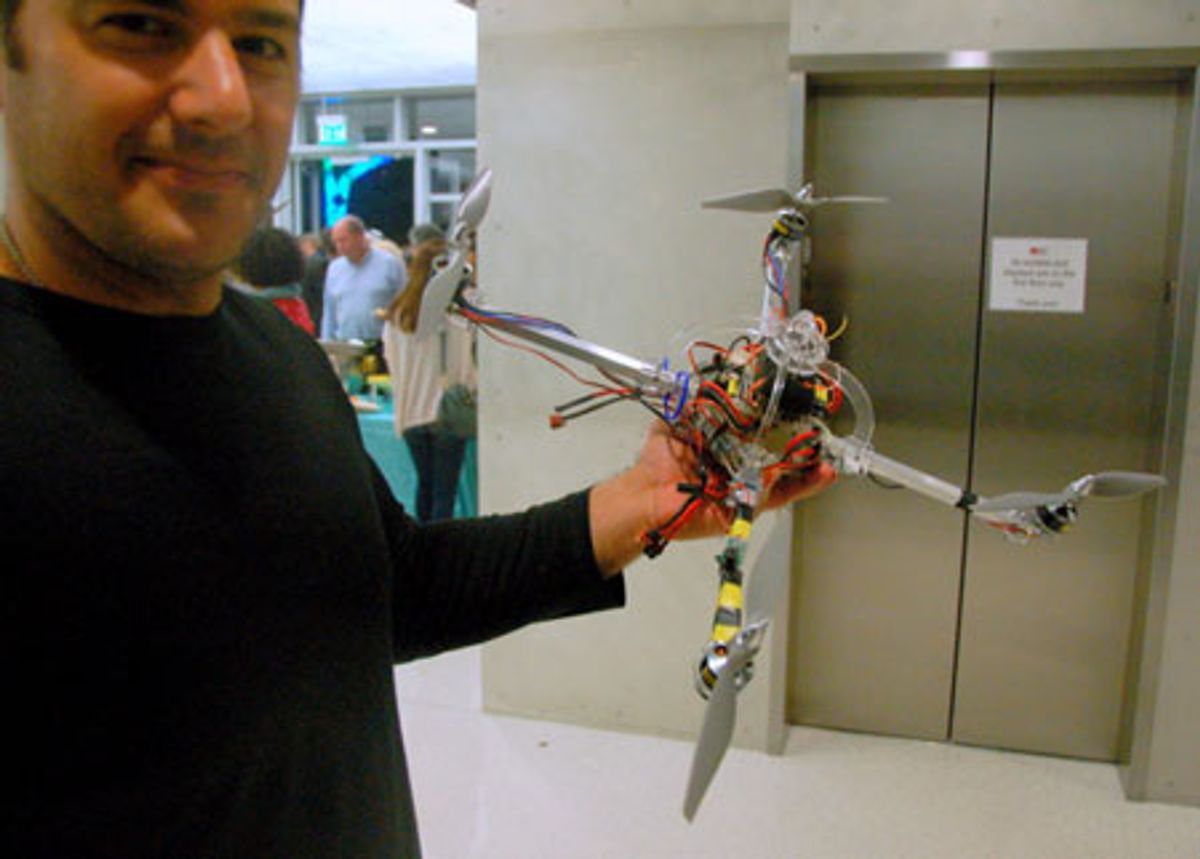The go-to way of delivering medial supplies to rural areas of developing nations is to not deliver them at all, and force sick people to hike miles through mountains and jungles to get the drugs they need. That, or some dude delivers them on a motorbike. And if the weather's been bad and the roads are washed out, well, good luck.
Solution? Do it all by air. The only way to do that efficiently (or at all) is to scale it way, way down from planes and helicopters to small UAVs. This is the concept behind Matternet, which seems to be both a technology and a company who wants to revolutionize the way medicine is delivered to the billion (with a "b") or so people who live completely cut off from road networks for at least some of the year. Matternet will be a network of autonomous quadrotor UAVs that use GPS and a beacon system to rapidly deliver small packages (containing drugs or medical testing supplies) to people who can't otherwise get them. Their first commercial platform (look for it in three to six months) will be able to fly 10 km while carrying a 2kg load, and it should be durable enough to make thousands of trips in variable weather. All this for only a few hundred dollars a unit. If it works out, Matternet could mean a drastic quality of life improvement for a lot (a lot) of people.
Matternet will develop in three distinct phases: phase one involves using a single UAV for point-to-point cargo transport. For example, a clinic uses a UAV to deliver drugs to an otherwise inaccessible nearby village in 30 minutes or less (or they're free). Phase two will add remote, autonomous recharging stations to allow UAVs to juice up in between deliveries, enabling them to roam farther afield and make multiple deliveries without having to return to base. Connect the dots between base stations and you have a delivery network. In phase three, all of these discrete networks grow large enough that they overlap, and it becomes possible to use a continuous chain of autonomously cooperating UAVs to transport things across entire continents very quickly and for cheap. Eventually, the idea is that Matternet turns into a sort of Internet for stuff, where you can make a request and get a physical object delivered to you. Matternet. Get it?
The obvious question now is, why stop with essential goods like medicines? Forget about the U.S. Postal Service, UPS, FedEx, and all of those short-lived microdelivery services. Autonomous UAVs are faster, cheaper, more efficient, more environmentally friendly, easier to scale, and don't arrogantly double-park all over the place. They could be the urban delivery system of the future, at least until we all get flying cars, at which point all those little flying robots and their packages will likely end up splattered across our windshields. Yay progress!
Evan Ackerman is a senior editor at IEEE Spectrum. Since 2007, he has written over 6,000 articles on robotics and technology. He has a degree in Martian geology and is excellent at playing bagpipes.




